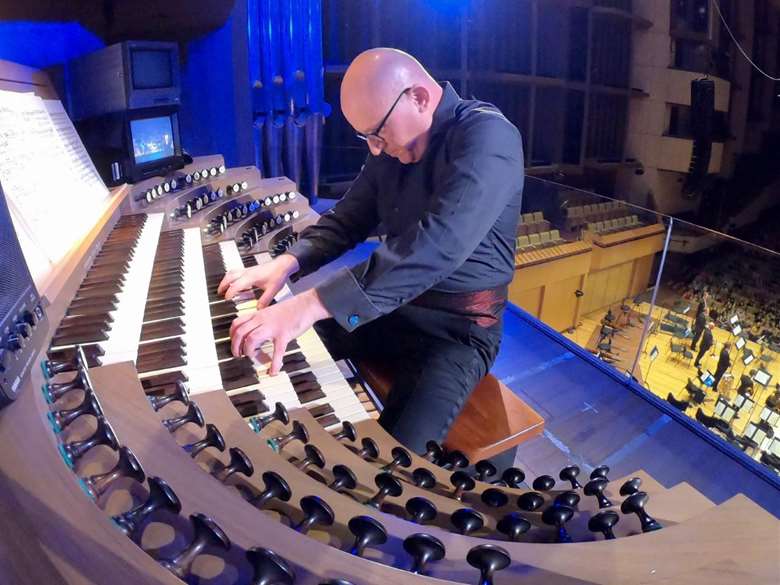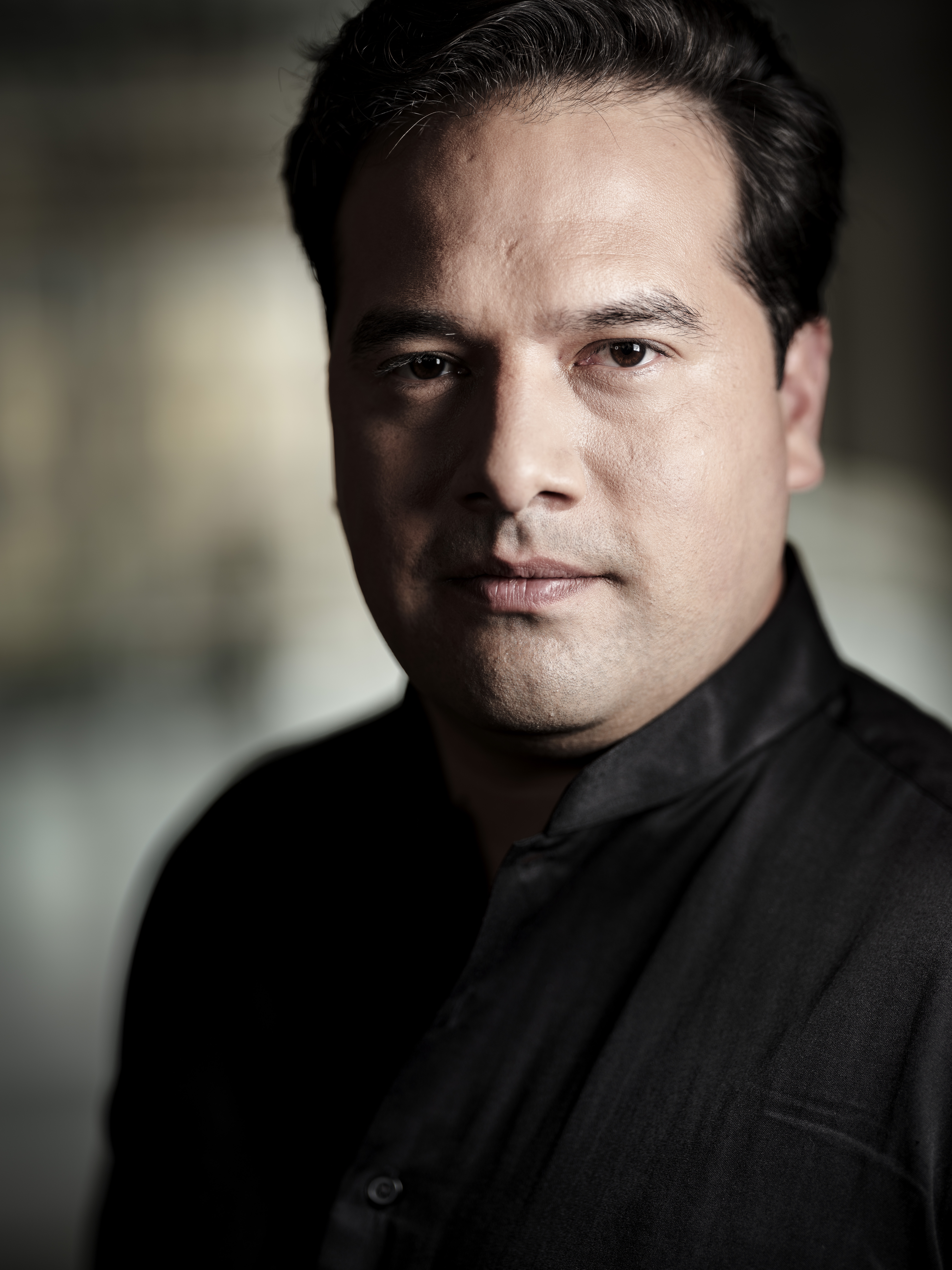Artist Managers: Pulling out all the stops
Andrew Green
Friday, December 9, 2022
Although they are in demand during the festive season, organists often struggle to find adequate artist management. Andrew Green explores the options available to organists on the hunt for representation

‘The playing of the merry organ…’ and all that. Yes, the festive season provides moments of peak visibility for organists, whether in remote village churches or cavernous cathedrals. But Christmas came early this year for British-born and -trained Joseph Nolan (pictured above), organist and master of the choristers at St George’s Cathedral in Perth, Western Australia, since 2008. I’ve kept in touch with Nolan, formerly of His Majesty’s Chapel Royal St James’s Palace, since meeting him in WA almost a decade ago… and a recent email bore news that he’s been taken Andrew on by prominent Vienna-based artist manager Mark Stephan Buhl. ‘So?’, you ask.
Well, as every organist with concert ambitions beyond a cathedral or other church/collegiate position is only too aware, finding any representation, let alone top-notch, is all too often bewilderingly problematic. ‘It can seem like an almost impossible task,’ Nolan reflects. ‘So, to be taken on by a manager of real stature was like winning the lottery. Mark is a superb communicator who knows the business inside out. Just two managements in the whole USA specialise in organists. In Europe very few artist managers represent them at all.’
Nolan is one of four organists named on Mark Stephan Buhl’s wide-ranging, classy roster. Heady stuff compared to the organistic timidity demonstrated by the vast majority of managers. Not a big or lucrative enough market, apparently, to make it worth their while. As a result, the concert organist’s lot generally requires him or her to take on the role of manager as well as performer, which very largely means fishing in the pool of generally cash-strapped sacred venues. A cathedral recital thus tends to have the status of merely a pleasant thing to do.
Buhl’s take on the current state of the market is that ‘managing organists has become very difficult [given] the financial problems experienced by churches, festivals and promoters. Concert series seem to have difficulties selling tickets for organ concerts.’ So why take on Joseph Nolan? Simple belief in the enduring appeal of prodigious talent, it would seem. ‘He’s one of the most successful and internationally renowned organists of our time. If not with Joseph, with whom would it be possible to create a successful career?’
Buhl brings to the job his own highly developed skills as an organist trained in Vienna. It’s not essential to possess those skills to successfully manage organists, he reckons, ‘but it can be an immense help, in areas such as repertoire knowledge and understanding the unique characteristics of any one organ. One of the challenges is persuading conductors to schedule works with organ — they tend to have little real knowledge of the instrument. What can help here is enlisting the support of the management of a concert hall with a fine organ — they will want to see it used.’
Nolan’s and Buhl’s focus will be on developing the former’s career as a concerto soloist — whether in standard bums-on-seats fare such as the Poulenc Organ Concerto and the Saint-Saëns Organ Symphony, or the likes of Philip Glass’s Symphony No. 12. ‘I know that working with top-notch orchestras has been a major factor in developing me as a musician,’ says Nolan. ‘The experience of finding my own concerto engagements means I have a large data base of contacts to share with Mark. It’s so important that you work closely with your manager… as a partnership.’
And the likely financial reward from this strategy? Nolan declines to be drawn on specific amounts, instead referring to ‘a level commensurate with what you’d expect from major performing arts bodies.’ No plans to desert his post in the fair city of Perth, though, where Nolan’s tenure has sent his cathedral’s choral standards skyrocketing.
So the USA would appear to have the only two artist managements in the world which make a speciality out of representing concert organists. There’s the Cleveland-based Karen McFarlane Artists office, which traces its lineage back to the 1920s. Then Phillip Truckenbrod Concert Artists, founded in 1967. I talk with the current owner of the latter, Charles Miller (pictured below), a one-time high-level concert organist himself. His list of over thirty organ soloists and duos (including British organists Jeremy Filsell and Benjamin Sheen) is managed from the modest-sized town of Dearborn Heights in Missouri.


Miller works essentially on his own, with part-time administrative help. Like Mark Stephan Buhl he emphasises the value, in this specialist area, of possessing extensive performing experience. ‘I’ll very often know what my organists require before they know they need it — for example, by looking at the specifications for a particular instrument I’m able to indicate whether or not certain repertoire is going to work. I can swiftly gauge how many hours of preparation will be needed at a particular console before a concert. The bottom line is that I can use my concert expertise to create the situation where promoters get the performances they’re expecting.’
Miller works all but exclusively inside the US market. Around a third of organ recitals he handles take place in concert halls — at the top level, the likes of Walt Disney Concert Hall in LA, Meyerson Symphony Center in Dallas, or Spivey Hall in Georgia. Prestigious venues may offer fees in the range of $2, 500 to $6, 000. Equally, Miller accommodates relatively low-paying promoters in every way he can — they can help in the building of an organist’s reputation over time. Offering intriguing repertoire as part of well-balanced, something-for-everyone programmes can aid that progress. For example, Miller notes, ‘Damin Spritzer has made a career out of bringing unknown organ composers before the public — the Frenchman René Louis Becker, for example, or Harvey Grace from Britain.’
Breaking into the US market from outside can nonetheless be ‘a real challenge,’ Miller observes. ‘Naturally, it’s a big advantage to have a position at a major, well-known cathedral… or somewhere like King’s College Cambridge. The other difficulty in recent years has been the xenophobic immigration policy instigated by “President 45”, as we call Trump. Thankfully, things are now opening up again under Biden.’
Overall, Miller stresses that in this niche market it’s all the more important that organists ‘work hard at making connections themselves. It means going to dinners and receptions. Being nice to people, making friends. You have to be visible.’